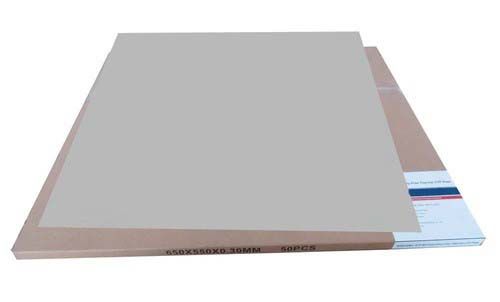
News
Chemical-free thermal CTP plates are an environmentally friendly computer-to-plate (CTP) plate used in the printing industry. Its core feature is its use of thermal imaging technology, no chemical developers are used during the platemaking process, imaging formation and plate preparation are accomplished solely through heat energy.

Core Principle
The surface of chemical-free thermal CTP plates is coated with a special heat-sensitive photosensitive layer. Irradiated by infrared laser light (typically with a wavelength of around 830nm), the photosensitive layer absorbs the heat energy and undergoes physical or chemical changes (such as thermal cross-linking, thermal decomposition/ablation), directly forming ink-absorbing image areas and ink-repellent non-image areas. No subsequent chemical development or fixing steps are required; simple washing or wiping is all that's needed to complete the platemaking process.
Key Features and Advantages of chemical-free thermal CTP plates:
The advantages of chemical-free thermal CTP plates lie in their balance of environmental friendliness, efficiency, quality, and affordability. Each dimension features clear, well-defined characteristics and a well-defined structure:
1. Environmental friendliness: Reducing pollution at the source
Completely eliminating the chemical agents required by traditional CTP plates, such as developer and fixer, eliminates wastewater discharge from the platemaking process. Traditional developer wastewater contains pollutants like strong alkalis, making treatment costly. Chemistry-free thermal CTP plates requires only clean water rinsing, simplifying wastewater treatment and even allowing for recycling. Furthermore, waste plate recycling eliminates the need for chemical residue treatment, making it easier to comply with green printing regulations and sustainable development requirements.
2. Process efficiency: Significantly simplifying production processes
By eliminating steps like developing and fixing, the platemaking cycle is significantly shortened: While traditional plates require 3-5 minutes per sheet, chemical-free CTP plates require only exposure followed by simple rinsing, completing the process in under 30 seconds. Furthermore, eliminating the need for developing equipment, saving workshop space, reducing operational complexity, and minimizing rework due to parameter fluctuations.
3. Quality Stability: Suitable for High-Precision Printing
Image formation relies on infrared laser heat, preventing chemical development from corroding the dots. Dot gain can be controlled to less than 3%, making it suitable for fine-detail printing. Furthermore, it is minimally affected by ambient temperature and humidity, maintaining stable imaging within a range of 15-35°C and 30%-70% humidity, ensuring excellent plate uniformity. It also boasts a press run of 100,000 to 300,000 impressions and is highly adaptable to a wide range of inks, ensuring consistent printing.
4. Cost Control: Significant Long-Term Advantages
With no need to purchase developer chemicals or maintain development equipment, consumables and maintenance costs can be reduced by 30%-50%. The plate has a shelf life of 12-18 months, significantly longer than the six months of traditional CTP plates, reducing waste caused by improper storage and resulting in significant long-term cost advantages.
5. Wide Application:
Compatible with a variety of printing methods (such as offset printing), it is widely used in commercial printing, packaging printing, book and magazine printing and other fields, meeting the needs of diverse customers and is particularly suitable for applications with stringent environmental requirements.
6. Safety and Health: Improving the Work Environment
This eliminates operator exposure to chemicals, reduces health risks such as skin burns and respiratory discomfort, lowers occupational health management costs, and creates a safer work environment.
Chemical-free thermal CTP plates represent a significant advancement in the environmentally friendly and efficient development of printing technology. By combining thermal imaging with chemical-free processing, they significantly reduce environmental impact while maintaining print quality. They are a key material for modern green printing and are ideal for companies pursuing environmentally friendly, efficient, and high-quality printing. As the printing industry continues to demand more environmentally friendly and efficient printing, this technology holds broad application prospects.
PRODUCTS
ONLINE CONSULTATION
If you have any questions, please contact us and we will contact you as soon as possible.
Leave A Message
If you are interested in our products and want to know more details, please leave a message here, we will reply you as soon as we can.

